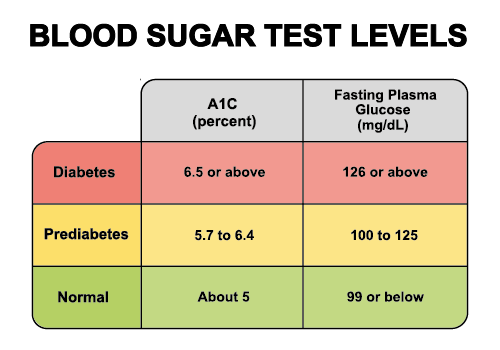Diabetes
Diabetes, also referred to as “high sugar” (“sugar ki bimari”) among Southeast Asians, is a condition where the body has difficulty metabolizing sugar (“glucose”).
Complications
Uncontrolled blood sugar can result in complications such as heart disease, stroke, blindness, kidney disease, nerve damage (neuropathy), dental infections, and even limb amputation.
Types of Diabetes
There are three main types of diabetes: type 1, type 2, and gestational diabetes (diabetes while pregnant).
Type 1 Diabetes
Type 1 diabetes is autoimmune. This means that your body attacks itself by mistake and stops you from being able to process sugar. It could be caused by genetic or environmental factors. Diet and lifestyle habits don’t cause type 1 diabetes. Currently, no one knows how to prevent type 1 diabetes.
Type 2 Diabetes
Type 2 diabetes can be prevented and delayed with healthy lifestyle changes. About 90-95% of people with diabetes have this type. You may not notice any symptoms, so it’s important to get your blood sugar tested if you’re at risk.
Gestational Diabetes (Diabetes While Pregnant)
Gestational diabetes develops in pregnant women who don’t already have diabetes. Gestational diabetes means having high blood sugar levels during pregnancy, which returns to normal after pregnancy. Such mothers and their babies are at higher risk for developing diabetes and other health problems.
Could You Have Prediabetes?
Take a 1-minute Prediabetes Risk Test. If your score is high, visit your doctor for a simple blood test to confirm your result.
How is Diabetes Diagnosed?
People from South Asian backgrounds are at a higher risk of developing diabetes. The term “pre-diabetes” indicates an increased risk of developing diabetes. Both people with pre-diabetes and people with diabetes can have the complications of high blood glucose mentioned above. Anyone who meets the following criteria should be tested for diabetes:
- Body Mass Index (BMI) 23 or higher (for South Asians) with additional risk factors
- Ages 45 or higher should be tested every 3 years if normal
- Women who have had gestational diabetes should be tested every 3 years
- Anyone who has been diagnosed with pre-diabetes should be screened every year
What Tests Are Used for Diagnosis?
The Fasting Blood Glucose Test
This is a test that measures the amount of glucose (sugar) in the blood after fasting for 10-12 hours. According to the American Diabetes Association, fasting blood glucose levels are as follows:
- Normal: less than 100mg/dL
- Pre-diabetes: 100-126 mg/dL
- Diabetes: more than 126 mg/dL
The Hemoglobin A1C
This is a blood test that measures the average blood sugar levels over the past 2-3 months. No fasting is required to take this test. The American Diabetes Association guidelines for A1C are as follows:
- Normal: less than 5.7%
- Pre-diabetes: 5.7-6.4%
- Diabetes: 6.5% or higher

What Are the Signs and Symptoms of Diabetes?
Diabetes can be diagnosed with or without any signs or symptoms. Some common symptoms include:
- Increased thirst and/or hunger
- Dry mouth
- Numbness and tingling in the arms, legs, hands and feet
- Fatigue
- Frequent urination, especially at night
- Weight gain
- Blurred vision
- Poor wound healing
How Do You Prevent Diabetes?
Follow the recommended lifestyle changes to avoid diagnosis and life-long medications.
- Physical activity: 150 minutes of rigorous activity per week has shown to be beneficial in reducing risk of developing hypertension, diabetes and heart disease.
- Eat healthy: eat MORE fruits, vegetables, high fiber, lean proteins and whole grains and LESS saturated fats, carbohydrates (rice and bread), and sweets
- Follow-up with your doctor every 3 months or as-needed until your blood sugar is under control
- Ask your doctor about prevention programs: The National Diabetes Prevention Program (National DPP) is a yearlong lifestyle change program focusing on healthy eating and physical activity. People with pre-diabetes can cut their risk of developing type 2 diabetes by 58% (71% for people over 60 years old). You can also search for programs near you on the National Registry.
Living With Diabetes
- Consult your doctor: sometimes lifestyle changes are not enough to control your blood sugar and your doctor may choose to prescribe oral or injectable medications. These medications must be taken regularly, as directed to avoid the serious complications of high blood sugar.
- Yearly exams
- Physical exam with your doctor to screen for complications of high blood sugar, such as heart or kidney disease
- Eye exam with an ophthalmologist to monitor for eye disease which could lead to blindness if not monitored.
- Keep your vaccinations up-to-date
- Take control of your co-existing medical conditions, such as high blood pressure and cholesterol
- QUIT SMOKING: People with diabetes who are smokers, are more likely to die from cardiovascular disease than non-smokers with diabetes!
- Avoid alcohol
- Manage stress

- Take care of your feet DAILY
- Check your feet for blisters, wounds, redness, or swelling,
- Wash your feet, dry them gently between the toes, and moisturize (not between the toes)
- Consult your doctor if you have a sore that isn’t healing or signs of fungal infection (yellowing, itching, flaking)
- Take care of your teeth
- Brush and floss at least twice a day
- Schedule a dental exam every 6 months or as needed
- Consult your dentist if your gums bleed or look red and swollen (these are signs of gum infection)
Consult your doctor before using any alternative therapies. Sometimes, even “natural” remedies can interact with your prescribed medications. DO NOT stop your medications without discussing with your doctor first!
___
References
- Wild S, Roglic G, Green A, Sicree R, King H. Global prevalence of diabetes: estimates for the year 2000 and projections for 2030. Diabetes Care. 2004;27(5):1047-1053.
- Mayo Clinic
- American Diabetes Association.
- El Camino South Asian Heart Center
- Centers for Disease Control and Prevention
